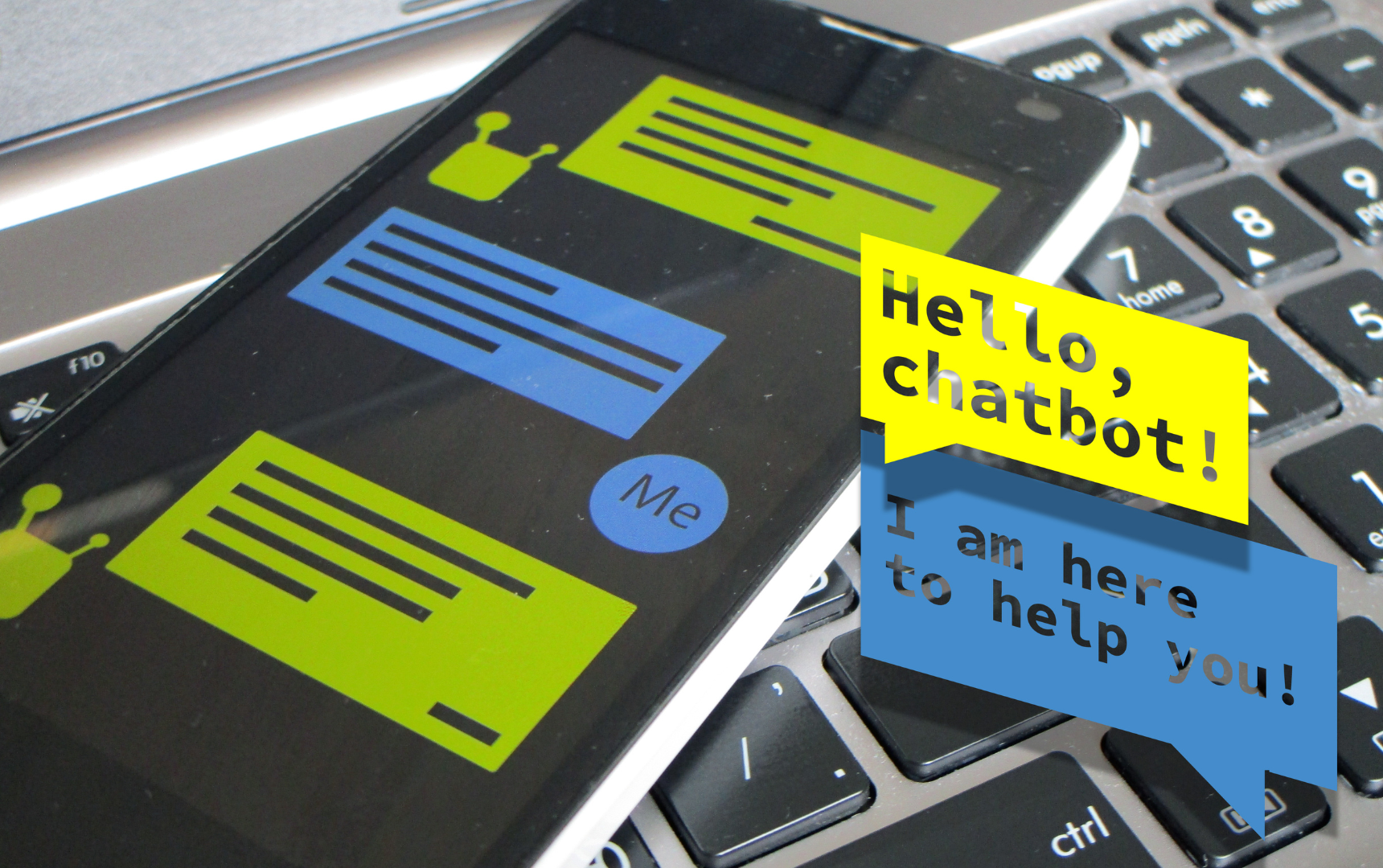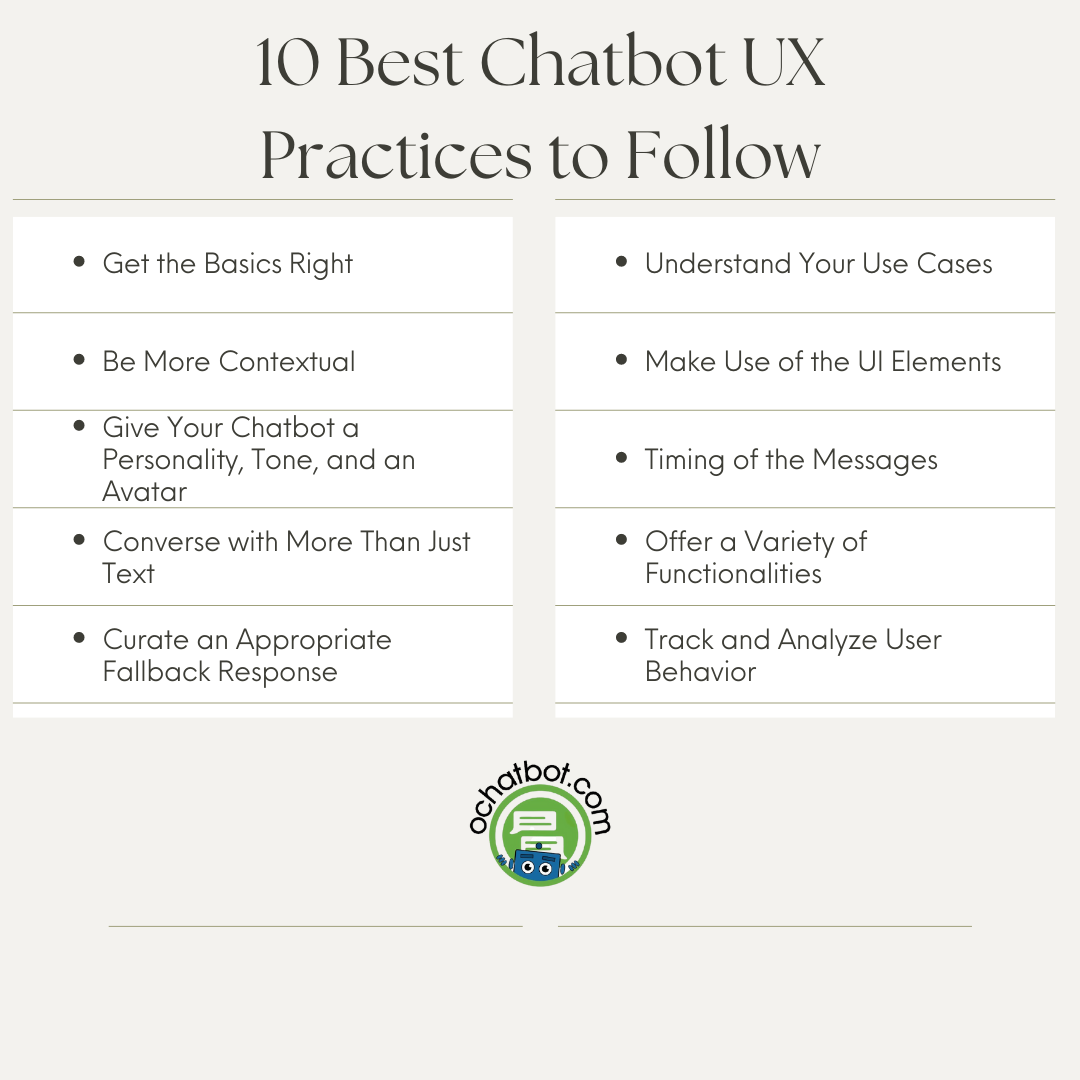Chatbots have become an indispensable part of businesses and firms in terms of customer engagement. Most chatbots these days engage users through conversations, predominantly via text in a chat window. These chatbots are called “Conversational Chatbots”.
These conversational AI chatbots can guide and facilitate visitors efficiently, providing solutions to their problems without any human intervention. In a report by Comm100, chatbots can handle 69% of the conversation from beginning to end. For a visitor to engage with a chatbot, the chatbot needs to be user-friendly, interactive, and straightforward. These metrics which enhance the user’s engagement with the bot can be collectively called User Experience (UX).
With the increasing proliferation of chatbots, the user experience has become an influential and crucial element to focus on when designing a chatbot.
In this article, let us discuss what a chatbot UX is and some of the best practices to follow when designing chatbots.
What is Chatbot UX and Why Is It Important?

Chatbot UX generally refers to the way the users interact with your chatbot and how they perceive it in terms of user-friendliness and effectiveness.
Designing a chatbot is similar to designing a website. As designing a website involves the placement of buttons, scroll bars, color schemes of background, theme, font, and functionalities, chatbot interfaces do require the same. In addition to the scale of the pop-up window and the color schemes, the chatbot UX comprises the speed of response, the fallback response, the effectiveness of solutions, user flow, and sometimes even, sales and conversion rates.
Devising a proper chatbot UX is crucial for businesses as they form the key to engaging customers, providing a simple and easy channel to get their problems solved, all the while upscaling sales and profits to your business.
A quality chatbot experience becomes a necessary addition to your chatbot strategy to deliver the best results from the chatbot to the user and from the chatbot to the business.
10 Best Chatbot UX Practices to Follow

The chatbot UX metrics can differ depending on your business and user’s needs, the scope of your business, and the required aesthetics of your chatbot.
Here are some best practices to keep in mind when designing and deploying your chatbot. These are not a must-do, but rather a guideline to deliver the best user experience.
Get the Basics Right
After you decide to deploy a chatbot for your business, planning on the basics plays a vital role in helping you make the most of your chatbot UX.
Take a step back and analyze your business’s needs and requirements, identify your purpose and goal, understand your audience requirements, and determine the type of chatbot, the tone, and context including the complexity of it and the channels where you will be deploying the chatbot. All these factors will help you curate better plans and insights into developing a chatbot UX strategy.
Understand Your Use Cases
One of the best ways to engage your audience is to design the chatbot based on the variety of use cases you’ll be deploying your chatbot. Whether it’s for your eCommerce store to assist customers in finding the right product, in the banking sector to assist with payments, or for healthcare scheduling your appointments, your customers and business will have specific use-case requirements.
For example, when you design your chatbot for generating sales and revenue, you might want to focus on generating leads, showing appropriate offers, and upselling the product. When you are designing your chatbot for support, you might want to focus on identifying the problem, getting in touch with the user, and creating support tickets when live agents are not available.
Additionally, gathering insights on your customer by analyzing the user behavior when they visit your website and how they interact with your chatbot can help you formulate multiple use cases, design workflows accordingly, and create a chatbot that suits you and your customers’ purposes.
Be More Contextual

In most chatbots, conversations happen via text. In such a case, chatbot scripts play a very important role in elevating the user experience. AI chatbots based on Machine Learning techniques like Natural Language Processing are a great choice to provide a contextual experience to users.
When scripting the text for the chatbot, it is better to think from the point of the user and curate the script accordingly. Create short, simple, and precise scripts focused on providing concise solutions to the user. When deploying a rule-based chatbot, you can curate the commonly asked questions and formulate the answers from users in the script. In case you plan on deploying an AI chatbot, you’d have to train the chatbot with the data over time.
But, even after curating the script, sometimes users might propose a question out of context or they might expect a different answer leaving your chatbot baffled. To overcome this hurdle, you can train the chatbot to revert the support back to an available live agent.

True AI to engage shoppers in conversational eCommerce. Create happy customers while growing your business!
-
5% to 35% Increase in AOV*
-
20% to 40% Increase in Revenue*
-
25% to 45% Reduction in Support Tickets
WE GUARANTEE RESULTS!
*When shoppers engage with Ochatbot®
Make Use of the UI Elements

Even though the chat is only restricted to a chat window and message area, there is a lot of potential to make the most out of that space and engage customers. With recent advancements in the field of UI and UX (interface and experience), several rules, guidelines, use cases, and do’s and don’ts are followed to deliver the best experience to the user.
Humans typically ascertain images better than words. When designing a chatbot, you can make use of various themes, images, icons, buttons, and carousels to deliver a better UX response. Adding buttons to branching questions or frequently asked questions will reduce typing effort and ensure the user gets the right response they were looking for.
Choose the position of the chat window. In most cases, the chatbot pop-up window can be seen on the bottom right side of the webpage. This placement allows for easy accessibility of the chat window and it does not hide much of the content on the page. You can also use color schemes that reflect your brand when designing a chatbot.
Timing of Messages
One of the prime motives for deploying a chatbot is to elevate the user experience by reducing the wait time and providing on-the-spot responses. 55% of users admit that they enjoy the quick replies provided by a chatbot. Chatbots also provide flexibility to the user to have conversations at a rate they are comfortable with. The user might type the whole content as lengthy text in a single go and other times, they might split a message into pieces. The same can be the case when receiving messages from a chatbot too.
When designing a chatbot, it is necessary to make it wait a couple of seconds before delivering a response. Specifically, a wait time of 2-3 seconds is ideal. On one hand, this helps the chatbot gather a variety of information from the database and also get the whole context of what the user is saying and their intent, and on the other hand, users generally feel more comfortable if a response is slightly delayed, making it seem more like their query is taken seriously.
Chatbots can send messages in quick succession that could be hard for the reader to ascertain and can result in information overload. Setting a conversational delay in these cases can help the user understand the information and deliver a natural user experience.
Converse with More Than Just Text
The conversation between the user and the chatbot can get a bit redundant and boring if the message content is flat and robotic. Also, having to just type everything might seem more like coding rather than having a conversation.
To elevate the typing experience, you can choose to add buttons for a few commonly asked questions or questions that branch out of a decision tree. This will reduce the need to type the question and also help the user solve the query with just a few clicks.
Adding images, GIFs, and emojis to the chat and conversation helps maintain the tone of the chatbot and conveys emotions.
Additionally, creating buttons to aid in polls and surveys and to gather feedback helps in collecting data from the user and in turn can be used to deliver an even better, personalized experience. Adding buttons also assists in keeping the user in the flow of the conversation and not deviating from it.
Related Reads: 6 Best Sales Chatbots of 2023
Offer a Variety of Functionalities
The deployed chatbot can deliver the best experience to the user only when it can accomplish and satisfy the needs and expectations of the customer. In addition to focusing on the user interface, make sure to add the necessary features and functionalities that can ease the customer journey.
For example, the 24/7 availability of a chatbot is one of the most liked functionalities according to 64% of the users. When designing your chatbot, you can add a lot of functionality to help find the right product, get the right solution, know the status of the deliverables, prompts on purchases, availability of the product, integration with third-party software depending on your purpose, use case and the user’s requirements. When these features are available at the click of a button, it can make the customer journey easier and elevate their experience.
Curate an Appropriate Fallback Response
This is one of the most important metrics to focus on when designing a chatbot UX.
Though chatbots can perform various pre-coded tasks, it is necessary to understand that chatbots are machine code and errors sometimes happen.
Sometimes, your chatbot might not understand what the customer is asking. In those cases, don’t let your chatbot freeze or not provide any response. You can politely prompt the user to kindly repeat their question or ask it in another way. Construct these messages in a creative, contextual way to strategically guide the user to find the solution without leaving them offended.
In case the chatbot doesn’t know how to answer the question, it can request the user to rephrase the question, show ways to connect with the live support, or show a button prompt to make that possible.
With AI chatbots, the level of unanswered questions can be culled down as the bot identifies the questions and the solution provided by analyzing the data fed. Over time they can learn to answer that question.
Give Your Chatbot a Personality, Tone, and Avatar

Your chatbot is often the first thing a user sees when entering your website. A well-designed and attractive chat window lends confidence to your brand. Some chatbots have even turned out to be mascots for certain brands.
Instead of a chatbot being just a message-generating and message-receiving program, adding a personality and avatar to it will greatly enhance the experience rather than making it sound like just talking to a machine. In advanced cases, you could even give your chatbot a voice to listen and converse with the user.
When creating an avatar, try to avoid any humanoid faces as most users dislike a realistic face representing what is basically a robot. Instead, go for creative, cartoonist, graphical avatars that reflect your brand and what you deliver.
Give your chatbot a name and a great introductory sentence. Design your chatbot personality in such a way that it reflects your brand. Personalize your chatbot to be friendly and polite, along with a touch of humor, and make sure it doesn’t go overboard or come across as annoying. Also, programming your chatbot to be able to change its tone of message or voice depending on the context certainly paves the way for a better user experience.
Track and Analyze User Behavior
Collecting user data and formulating strategies based on that data is a great way to understand and meet customer expectations.
One of the best ways to ascertain this data is by using an analytics platform or a dashboard which consolidates all the data based on your input metrics. These dashboards can show how the user interacted with the chatbot, the time of interaction, and the conversational success and failure rate. Another way to acquire data from the user is by using polls, surveys, and feedback from the user.
This can help you understand the user expectations and create a customer strategy in such a way that can elevate the user experience.
Related Reads:
5 Best Conversational AI Chatbot Solutions for eCommerce
AI Chatbot in Customer Service: 5 Benefits
Why Use an Enterprise AI Chatbot Solution for eCommerce: 6 Benefits
Frequently Asked Questions
What is a chatbot UX?
In simpler terms, chatbot UX refers to the user-friendliness and effectiveness of the chatbot from the perspective of the user. If the user finds interacting with the chatbot easy and worthwhile and gets their queries solved, then it means your chatbot’s UX is good.
How does a good chatbot UX help businesses?
Designing a chatbot with a good UX makes it easy for the user to interact with your chatbot and get their problems solved. This factor also puts you at a competitive advantage compared to businesses that don’t focus on the chatbot UX part.
What are some functionalities of a chatbot?
Availability 24/7, ability to train and learn, multi-channel support, easy customization and building, and lead generation are some of the functionalities of a chatbot.
A Quality Chatbot UX Matters
Chatbot UX is becoming an integral factor in distinguishing a good chatbot from an average chatbot. From simple button interfaces to graphical user interfaces, every day more and more advancements are made in the field of chatbot experience.
Making sure to implement the UI and UX principles and guidelines, and best practices when designing your conversational user interface can put you miles ahead of the completion and be a great aid to customer service.
There are a lot of factors when designing a chatbot. Understand the user’s expectations and your business goals, and deploy, test, and experiment with different strategies and methods to arrive at a near-perfect chatbot that can greatly elevate the user experience.
- The Best Chatbots for Customer Service: Boost Support and Save Time - April 11, 2025
- Top 5 Must-have Shopify Review Apps - March 14, 2025
- Ochatbot Quick Tutorial #1: Help customers find products with Generative AI - December 12, 2024

